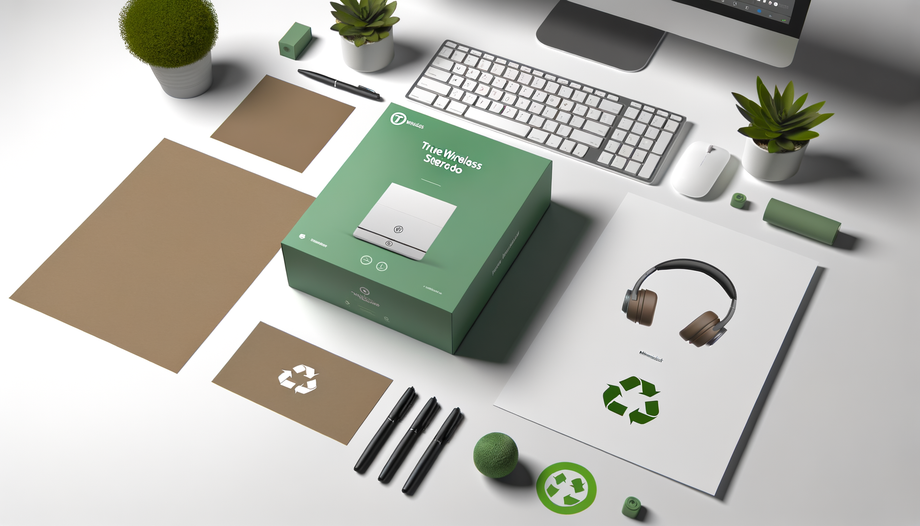In an era where sustainability is no longer just a buzzword but a critical component of product strategy, the trend of minimalist design has become increasingly predominant, especially in the consumer electronics sector. A particular standout in this movement is the True Wireless Stereo (TWS) headset industry, where both retailers and manufacturers are steering away from over-packaging practices.
The Problem with Over-Packaging
For decades, consumer products, especially electronics, have been encased in layers of excessive packaging. Initially, this approach was taken for the purpose of product protection, brand recognition, and to enhance the unboxing experience. However, this practice has led to significant environmental concerns:
- Waste Generation: Excessive packaging contributes to landfill waste and environmental degradation. According to the EPA, packaging constitutes about 30% of total global waste annually.
- Higher Carbon Footprint: From the production of packaging materials to their transportation, the carbon footprint associated with over-packaging is substantial.
- Consumer Frustration: Modern consumers are becoming increasingly eco-conscious, leading to an aversion towards complicated multi-layer packaging.
Rise of Minimalist Packaging Design
The transition to minimalist packaging isn't merely a trend; it's a pragmatic solution aimed at balancing aesthetic appeal with environmental responsibility. Here's why manufacturers and retailers are embracing it:
1. Eco-friendly Appeal:
Minimalist designs often use fewer materials—like thin eco-friendly cardboard or biodegradable options. This reduces waste and portrays a brand image of environmental responsibility and sustainability.
2. Enhanced Brand Perception:
A package that communicates purpose rather than clutter enhances brand storytelling, strengthening the emotional connection with consumers. Minimalist designs often feel more modern and upscale, aligning with the preferences of a generation that values simplicity and clarity.
3. Cost-Effectiveness:
Less material usage translates to reduced production costs. Moreover, leaner packaging requires less space during shipping, lowering transportation expenses. While the upfront investment in developing sustainable materials might be higher, the resultant cost savings outweigh initial expenditures.
4. Unboxing Experience Redefined:
Innovative minimalist design delivers a memorable and straightforward unboxing experience. Instead of battling layers of wrapping, consumers can engage directly with the product, reinforcing satisfaction and loyalty.
Implementation Across the TWS Industry
With the TWS headset market burgeoning, adopting minimalist packaging becomes a strategic necessity. Here's how influential players are leading the charge:
- Tech Giants Spearheading Change: Brands like Apple and Samsung have already started reducing packaging materials, focusing on eco-friendly alternatives. By redesigning packages for their AirPods or Galaxy Buds, they set industry standards.
- Innovative Use of Materials: TWS manufacturers are integrating recycled materials, such as post-consumer plastics or films, as part of their product packaging to highlight their commitment to closed-loop production cycles.
- Interactive and Informative Packaging: As designs become simpler, the integration of QR codes or augmented reality features offers information without the need for excessive material use.
The Retailer's Role
Retailers are not just passive participants; they actively shape this paradigm shift:
- Curated Shelf Display: Minimalist packaging allows for more ergonomic and clean shelf displays, making consumer discovery intuitive and seamless.
- Educational Initiatives: Retailers have a responsibility to educate consumers about the environmental benefits of choosing products with minimalist packaging, fostering greater public awareness.
- Collaborative Feedback Loops: Partnering with manufacturers to share consumer feedback on packaging allows for continued refinement and alignment with market demands.
Challenges and Future Outlook
Despite its merits, this shift isn't devoid of challenges:
- Balancing Protection with Simplicity: Manufacturers must ensure that the reduction of materials doesn't compromise the product's safety.
- Developing Universal Standards: Without standardized metrics, what constitutes "minimalist" can be subjective.
Looking ahead, the TWS headset industry is poised to lead by example, showing that sustainable, minimalist packaging is not only a feasible choice—it's the responsible pathway forward. Driven by consumer demand and ecological responsibility, the era of over-packaging may soon become a relic of the past.
Embracing minimalist design is a testament to the industry's innovative spirit and unwavering commitment to a sustainable future. With concerted efforts from manufacturers, retailers, and conscious consumers, we're paving the way for an environmentally sound global marketplace.
Explore Comprehensive Market Analysis of TWS Headset Packaging Materials Market
SOURCE -- @360iResearch
